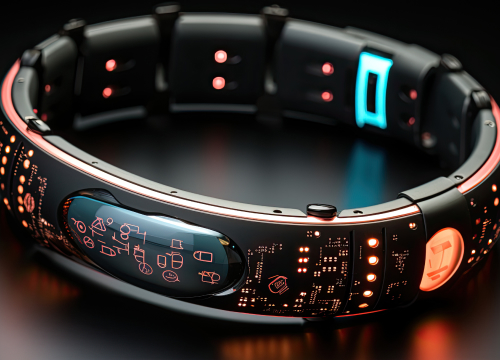
Challenges You May Face Creating an IoT Device

“The most painful architectural mistakes are those that make it impossible to build something stable, even if no more mistakes were made.”
© Alexander Melnyk. Sirin Software Python Team Lead
The Internet of Things (IoT) has opened up a world of possibilities for enhancing our daily lives and transforming industries. However, the road to creating a successful IoT device has its hurdles. Navigating the intricacies of development, security, and integration can be daunting for even the most experienced innovators. As you embark on this journey, being well-informed about potential challenges is essential to plan and execute your project effectively. In this article, we explore the various difficulties you may encounter during the development process and provide practical solutions for the most common issues of IoT building to help you overcome them. In this exciting and innovative process, it’s important to be aware of the potential challenges that come with it. Here are some of the obstacles you may face.
Cost
The development and production of IoT devices can incur substantial expenses, especially for small enterprises and startups. It is vital to consider the materials, components, time, and resources required for essential tasks such as development, research, and coding.
Solution:
Addressing the common challenges in IoT device development requires a strategic approach. One effective method is to begin with a Minimum Viable Product (MVP), which incorporates only the essential features needed to address the core problem that the IoT device aims to solve. This approach enables testing the device on a limited budget and gathering valuable feedback for refining and enhancing the device. Moreover, delegating certain aspects of the development process, such as programming, hardware manufacturing, or design, can help alleviate workload and reduce expenses. For instance, partnering with an experienced developement company can bring expertise and resources to the project, while keeping expenses under control.
Interoperability
Making IoT devices compatible with other systems and devices is a challenge. Additionally, creating a user-friendly interface while balancing functionality is also difficult.
Solution:
Make sure that you have specialists and developers with the appropriate qualifications for your project at your disposal. If not, the expert companies that develop IoT devices can provide valuable knowledge and experience, which includes embedded software development services and firmware development services. They also gather and process feedback from testing and prototype use to ensure effective devices with intuitive interfaces.
Power Consumption
Effective IoT device design requires minimizing power consumption to extend battery life. Often, energy-intensive use of wireless connections and various sensors is inevitable for the operation of an IoT device. Regular software updates and maintenance tasks can also increase power consumption if they require the device to remain active for an extended period.
Solution:
To avoid another one of the problems of IoT device creation, you need to focus on optimizing connectivity protocols and making informed choices when selecting sensors. Additionally, implementing data compression and edge computing strategies can enhance the device’s performance. Lastly, being mindful of the frequency of updates and maintenance tasks can contribute to a more efficient development process.
Data Processing
The most frequent problems with IoT device development often stem from the immense amount of data generated by these devices. This data demands real-time processing to yield valuable insights, presenting challenges to overcome. The sheer volume of data can surpass processing capacities, while the need for real-time insights calls for high-speed processing and low-latency networks.
Solution:
Maximizing IoT data processing can be achieved by reducing data through filtering, compression, or summarization. Edge computing is another solution that enables local processing, reducing the need for data transmission and minimizing latency. Optimizing connectivity protocols is also important.
Security
Ensuring the security of IoT devices and maintaining data privacy is crucial due to their internet connectivity, making them susceptible to cyber-attacks. Furthermore, third-party components and software can also pose security risks.
Solution:
Incorporating robust authentication mechanisms to deter unauthorized access and applying encryption techniques to protect sensitive data are important steps in overcoming challenges in IoT development. Use privacy-by-design principles, which involve minimizing data collection and anonymizing. In some cases, you may need to conduct regular security audits and implement physical security measures such as enclosures with tamper detection mechanisms.
Regulatory Compliance
Meeting regulatory compliance and certification requirements is also one of the most common issues of IoT device building. Various regulatory bodies enforce rules for data privacy, wireless communication standards, and product safety. Adherence to these standards is important for compliance, but the process can be challenging and costly due to varying certification requirements across markets. Moreover, evolving regulations and limited guidance can further complicate compliance.
Solution:
Engaging an expert company as a trusted partner at this stage could be the right choice, because you may need to invest in expensive testing, verification services, and, sometimes, certification fees. Be aware that meeting compliance and certification requirements can also significantly impact the time to market for IoT devices, requiring your developers to allocate more time and resources to ensure regulatory compliance across multiple markets.
Professional Advice for Building IoT Devices
“It is always difficult to give up something into which a lot of time and effort has been invested, but usually the losses from switching “now” will be significantly smaller than “later”. It’s easier to replace a brick when the pyramid is not yet on it.”
© Alexander Melnyk. Sirin Software Python Team Lead

Developing IoT devices can be complicated, requiring expertise, guidance, and a well-defined strategy. As a skilled provider of IoT development services, Sirin Software offers the following recommendations to keep in mind when going through the process:
– Begin with a clear use case and requirements to stay focused on your goals and avoid needless complexity.
– Select the right technology stack that meets your performance, scalability, and security requirements.
– Prioritize security as a top priority in IoT device development.
– Embrace agile development principles to ensure that you can adapt quickly to changing requirements and feedback.
– Leverage the power of data generated by your IoT devices to extract valuable insights into user behavior, performance, and usage patterns.
– Consider the long-term maintenance and support needs of your IoT device, ensuring that you have a plan in place for addressing any issues that may arise post-launch.
– Establish strong communication channels within your development team and with any external partners to facilitate smooth collaboration, knowledge sharing, and efficient problem-solving.
– Develop a thorough testing and validation strategy to identify potential issues early on in the development process, allowing for necessary adjustments and improvements before deploying your IoT device.
– Pay attention to user feedback during the development process and after the launch of your IoT device, using it as a valuable resource to refine and enhance the overall user experience, functionality, and performance of your product.
– Keep in mind that engaging a company with the required experience, extensive research, and proficient specialists in the development process greatly simplifies the task. Furthermore, this method often proves to be more economical.
Choose Sirin Software as Your Trusted Navigator
Navigating the complexities of IoT device development can be daunting. With challenges like cost, interoperability, and security, having a reliable partner like Sirin Software is invaluable. Our team’s expertise is demonstrated in projects like the development of a user-friendly Human-Machine Interface (HMI) for a 3D scanner and a real-time location tracking system for businesses. These projects highlight our ability to integrate various technologies, design intuitive user interfaces, and provide valuable business insights.
By working with us, you’ll have access to tools that can speed up the development process, reduce risks, and guarantee that your product complies with regulations. Don’t leave the success of your IoT project to chance. Choose Sirin Software as your trusted partner, and confidently bring your innovative IoT device to life.
FAQ
Which features do I need to include in my device's Minimum Viable Product (MVP)?
Identify the core problem your IoT device aims to address and focus on, including only the essential features that solve that problem. This will help you prioritize functionality and create an MVP that effectively tests your concept while minimizing costs.
Are there any specific design choices that could help extend it?
Optimizing connectivity protocols, selecting energy-efficient sensors, utilizing data compression, implementing edge computing, and reducing the frequency of updates and maintenance tasks can help extend your IoT device's battery life.
How can I ensure that the user interface of my IoT device is user-friendly and intuitive?
When tackling challenges associated with IoT device development, collaborating with specialists experienced in designing user interfaces for IoT devices can be invaluable. Their insights and feedback can help you balance user-friendliness and functionality optimally, ensuring a successful IoT project.
How can I manage power consumption in my IoT device?
Managing power consumption in IoT devices involves optimizing the device's software and hardware. This can include using low-power modes, optimizing data transmission, and selecting energy-efficient components. It's also important to consider the power source and how often it can be recharged or replaced.
How do I choose the right technology stack for my IoT device?
When dealing with IoT development and its challenges, seeking guidance from seasoned IoT developers is crucial in determining the technology stack that best suits your device's unique requirements. Remember the importance of performance, scalability, security, and system compatibility when selecting the most appropriate technology stack for your IoT project.



